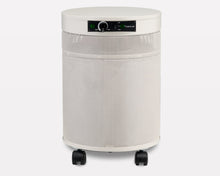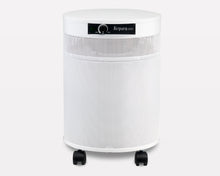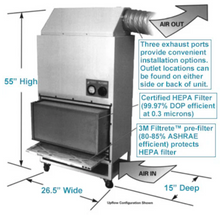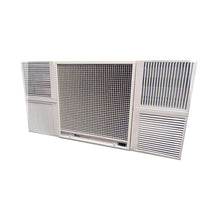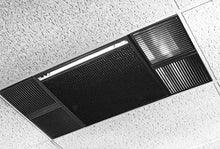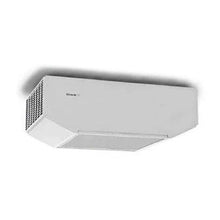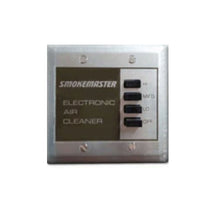The Engineer's Guide: Unpacking the Ventilation Requirements for Your Home Cigar Lounge
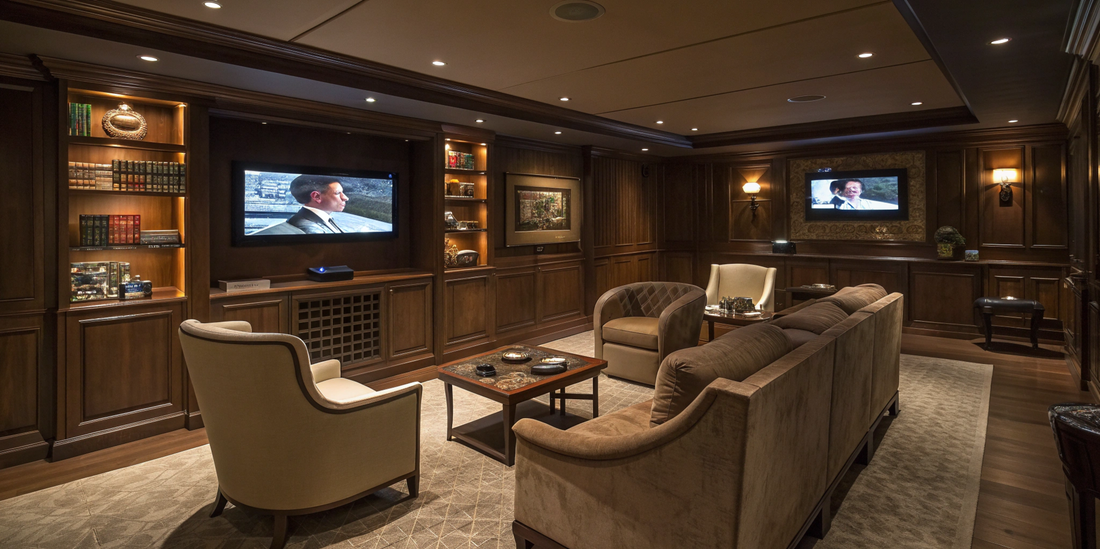
By the Experts at Commercial Air Purifiers | Published: October 19, 2025
Creating a personal cigar lounge is more than just furnishing a room; it’s an act of engineering. You are designing a dedicated environment intended for a specific purpose. Just as a high-end humidor has strict technical requirements for temperature and humidity—the classic 70/70 rule—a functional and responsible home cigar lounge has its own set of non-negotiable requirements for air management. Getting this right is the difference between a true sanctuary and a persistent source of odor and pollution for your entire home.
Many enthusiasts mistakenly believe that a cracked window or a small air filter will suffice. This is a critical misunderstanding of the physics and chemistry of tobacco smoke. As air quality engineers and specialists, we're here to provide the definitive blueprint. This is not a list of suggestions; these are the core ventilation and purification requirements for designing a home cigar lounge that meets professional standards, ensuring a clean, comfortable, and contained experience every time.
The Foundation of Air Control: Why Standard HVAC Isn't Enough
Before we discuss what your lounge needs, we must first address what it absolutely cannot have: a connection to your home’s central heating and air conditioning (HVAC) system. Tying your cigar lounge into your home's HVAC is the single most common and disastrous mistake an aspiring lounge owner can make.
Your home's HVAC system is designed to circulate air throughout every room. When it pulls air from your cigar lounge, it will effectively gather the smoke, odors, and toxic compounds and distribute them efficiently into your bedrooms, kitchen, and living areas. Furthermore, the sticky residue from the smoke—known as thirdhand smoke—will contaminate the ductwork itself. This means that even when the system is just heating or cooling, it can perpetually reintroduce the stale smell of smoke into your home for years to come.
The U.S. Centers for Disease Control and Prevention (CDC) has identified over 7,000 chemicals in secondhand smoke. Containing this complex pollutant isn't just a matter of preference; it's a critical step in protecting the health of your home and family. Therefore, the first and most foundational requirement is this: your home cigar lounge must be an isolated and independently conditioned space. The supply and return vents for your central HVAC system must be sealed off permanently.
Pillar One - Exhaust & Negative Pressure (The Removal System)
With the room isolated, the first pillar of your air management system is a powerful exhaust setup. Its job is to physically remove large volumes of contaminated air from the room and vent it outside. The performance of this system is measured by a key industry metric.
The Golden Rule: Air Changes per Hour (ACH)
Air Changes per Hour (ACH) is a measurement of how many times the entire volume of air in a room is removed and replaced within one hour. For a normal residential room, 1-2 ACH is common. For a commercial smoking lounge, the standards are drastically higher. The American Society of Heating, Refrigerating and Air-Conditioning Engineers (ASHRAE), which sets the global standards for ventilation, recommends extremely high ventilation rates for designated smoking areas in their Standard 62.1. While commercial requirements can reach 30 ACH or more, a robust home lounge should aim for a minimum of 15 ACH. This ensures the air is being aggressively exchanged, preventing extreme buildups of smoke.
Calculating Your Exhaust Fan's CFM Requirement
To achieve your target ACH, you must select a fan with the correct power, measured in Cubic Feet per Minute (CFM). CFM is the volume of air the fan can move. You can calculate your required CFM with a simple formula:
CFM = (Room Volume in Cubic Feet x Target ACH) / 60 minutes
Let’s walk through an example for a 15-foot by 12-foot room with an 8-foot ceiling:
-
Calculate Room Volume: 15 ft x 12 ft x 8 ft = 1,440 Cubic Feet
-
Apply Target ACH: 1,440 cu ft x 15 ACH = 21,600 cubic feet per hour
-
Convert to CFM: 21,600 / 60 minutes = 360 CFM
In this scenario, you need an exhaust fan rated for at least 360 CFM to meet the minimum requirement.
Creating Negative Pressure
A powerful exhaust fan does more than just remove air; it creates negative pressure. This is a state where more air is being exhausted from a room than is being actively supplied. This is arguably the most critical engineering principle of a cigar lounge. Negative pressure turns your lounge into a self-contained vacuum, ensuring that when you open the door, air from the hallway flows into the lounge, not the other way around. This is what stops smoke and odors from escaping and infiltrating the rest of your house.
Pillar Two - Makeup Air (The Supply System)
You cannot exhaust 360 CFM of air from a room without providing a way for 360 CFM of new air to get in. This replacement air is called "makeup air." Without a planned source for makeup air, your powerful fan will struggle to work, putting strain on the motor and failing to create proper flow.
There are two primary methods for supplying makeup air:
1. Passive Makeup Air (The Simple Method): This is the most common approach for home lounges. By leaving a significant gap (typically 1 inch) at the bottom of the room’s door, you create a pathway for air to enter. The negative pressure created by your exhaust fan will pull the necessary makeup air from the adjacent hallway or room. This is simple, effective, and requires no additional mechanical systems.
2. Active Makeup Air (The Professional Method): For a truly high-end lounge, a dedicated, ducted makeup air supply can be installed. This system actively brings in fresh air, often from the outdoors, and can be designed to heat or cool it to match the room's temperature. This provides superior comfort and air quality but is a far more complex and costly installation that requires professional HVAC expertise.
Pillar Three - Air Purification (The Polishing System)
The third and final pillar is in-room air purification. This is a component that many overlook, assuming a powerful exhaust fan is all they need. However, ventilation and purification serve two distinct, complementary roles.
Why Exhaust Alone Isn't a Perfect Solution
Even at a high rate of 15 ACH, it still takes four minutes for all the air in the room to be exchanged just once. During that time, a huge amount of smoke remains suspended in the air, dulling your palate and settling onto surfaces. An exhaust fan dilutes the concentration of smoke over time, but it cannot instantly scrub the air clean. This is where a dedicated, in-room air purifier, often called a smoke eater, becomes essential.
The "Scrubber": Your In-Room Smoke Eater
Your smoke eater's job is to continuously capture the pollutants that the exhaust system hasn't removed yet. It works by constantly recycling the internal air within the lounge through a set of high-efficiency filters. This dramatically reduces the ambient smoke density during your session, creating a more pleasant environment. Crucially, it's also the system that works after you're done, "polishing" the air to remove residual particles and odors that would otherwise form thirdhand smoke.
Sizing and Equipping Your Air Purifier
Just like your exhaust fan, your air purifier must be sized for a high rate of air exchange. For effective smoke removal, the purifier should be able to achieve 8-10 ACH on its own. You would use the same CFM formula to calculate its required power.
Furthermore, it must be equipped with the right technology. The U.S. Environmental Protection Agency (EPA) explains that no single filter type can remove all pollutants. For tobacco smoke, a system requires two specific filter types:
-
A True HEPA Filter: To capture 99.97% of the solid smoke particles (PM2.5).
-
A Heavy-Duty Activated Carbon Filter: To adsorb the thousands of gaseous VOCs and chemicals that cause persistent odors. A true smoke-eating unit will contain 15 pounds or more of carbon.
The Blueprint: Designing Your Complete Ventilation System
Let's consolidate these requirements into a clear, actionable blueprint for your project.
-
Isolate the Room: Verify that all central HVAC supply and return ducts in the room are professionally sealed and decommissioned.
-
Calculate & Install High-Power Exhaust: Determine your room's required exhaust CFM to achieve a minimum of 15 ACH. Select a high-quality inline duct fan of the appropriate size and have it vented directly to the exterior of your home.
-
Plan for Makeup Air: The simplest and most effective method is ensuring a 1-inch gap exists under the lounge door.
-
Calculate & Install a High-Performance Air Purifier: Determine the required CFM for an in-room smoke eater to achieve 8-10 ACH. Select a unit that contains both a large HEPA filter and a substantial activated carbon filter. This level of performance requires specialized equipment. Our commercial-grade smoke eaters are engineered to meet these demanding airflow and filtration requirements.
-
Optimize Placement: Install the exhaust fan intake vent high on a wall, ideally opposite the primary makeup air source (the door). Place the freestanding air purifier in a location that promotes a circular airflow pattern throughout the room, avoiding corners. To fully grasp why both filter types are essential, read our guide on HEPA vs. Activated Carbon: A Detailed Comparison.
Conclusion: An Engineered Approach to Excellence
A truly exceptional home cigar lounge is born from an appreciation for detail, and its success hinges on a properly engineered environment. By embracing the three pillars of air management—high-volume exhaust for removal and pressure, a controlled supply of makeup air, and high-efficiency purification for polishing—you can create a space that offers an unparalleled experience. Meeting these technical requirements ensures comfort, protects the rest of your home from contamination, and elevates your personal lounge from a simple room to a professionally designed sanctuary.
Ready to design your perfect cigar lounge? Contact our specialists for a personalized consultation.
Your Technical Ventilation Questions Answered
Can I just use a powerful air purifier instead of an exhaust fan?
While a powerful purifier is essential for cleaning the air inside the room, it cannot replace an exhaust fan. An air purifier only recirculates and cleans internal air; it does not create negative pressure. Without an exhaust fan actively removing air, smoke and odor will still escape the room through gaps, outlets, and doorways, permeating your home.
Where should I vent the exhaust fan to?
The exhaust must always be vented directly to the outdoors. It should never terminate in an attic, a crawlspace, a garage, or another room. Doing so will simply move the hazardous pollutants and intense odor to another part of your house, potentially causing major damage and contamination.
What kind of exhaust fan should I buy for my cigar lounge?
We recommend a high-quality "inline duct fan." Unlike a standard bathroom fan that sits in the ceiling, an inline fan is installed within the ductwork itself. They are typically much more powerful, durable, and quieter than their bathroom counterparts, making them ideal for the high-CFM requirements of a smoking lounge.
Does my makeup air source need a fan too?
Generally, no. If your exhaust fan is powerful enough to create strong negative pressure (as it should be), a passive makeup air source like a door undercut or a wall-louvered vent is sufficient. The negative pressure will passively pull all the makeup air it needs into the room. A fanned, or "active," makeup air system is a more complex and costly option reserved for high-end professional installations.

